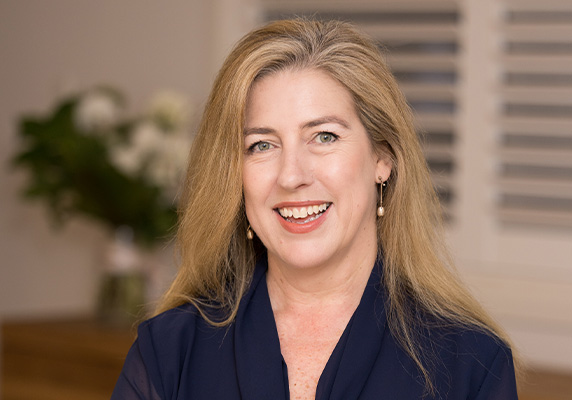A maritime law expert describes her voyage through this area of the law, and what lies ahead for Australia’s ship-building industry.
Australia has sovereign rights over a vast area of ocean. This includes rights to the fishery, mineral and petroleum resources in the area, worth billions of dollars annually. With the recently announced AUKUS submarine strategy promising to boost the shipbuilding industry, there will be a wave of opportunities to work in commercial law – and maritime law in particular.
As an island nation, Australia is dependent on the sea for trade and travel and yet, as maritime lawyer Danella Wilmshurst says, very little attention was given to the shipping and cruise industry before the pandemic. The change came from the time COVID-19 began causing major disruptions to trade and to cruise holidays, she adds.
Wilmshurst is internationally recognised for her wide-ranging maritime law expertise. She is the past Director and Company Secretary of the Maritime Law Association of Australia and New Zealand, whose 500+ members include lawyers and judges, academics, representatives of major exporters, and shipping companies, port operators, ship, cargo and liability insurers and government and defence force representatives. She has acted in the areas of protection and indemnity insurance, hull and machinery insurance, international trade, charter-party and commodities disputes.
A happy accident, a happy coincidence
In 1996, after graduating with a Diploma of Law from Sydney University, Wilmshurst began working for Norton Smith & Co, which boasted one of the large shipping practices in Australia.

Maritime law was not an area Wilmshurst had studied in depth; her law course covered only a few related subjects. At that time there weren’t any courses devoted to maritime and shipping law, as there are now (most notably, postgraduate courses at the University of Queensland). But Wilmshurst found she could draw on her studies on commercial, trade and private international law as a foundation for her future career.
“It was a happy accident,” she recalls. “I was drawn to private international law, as opposed to public international law, which is more about the interests of various states in where you can go fishing or whether whaling is permitted. Private international law is more to do with private contracting parties. I was really interested in that area of law, and, in a happy coincidence, I worked out that at Norton, Smith & Co, I’d have the opportunity to apply that interest to shipping cases.”
The best area of law in the world
Unlike in Singapore and England, Australian maritime lawyers tend to have a broad expertise in maritime law, rather than dealing only with either dry shipping (commercial and contractual matters) or wet shipping (accidents on the high seas). It’s this broad remit that Wilmshurst celebrates as constantly challenging, fascinating and fun.
“It’s the best area of law in the world,” she enthuses. “It’s so varied, and in terms of its commerciality, it follows the [economic] cycles so closely. At the moment, I’m doing a lot with ship builders, whereas in the past it might have been all about ship arrests. It changes all the time. Because it’s so quick, commercial and international, you’re always coming up against a new issue. Lawyers are usually either disputes lawyers or commercial lawyers, but I do the drafting and the commercial aspects as well, because it’s so specialised.”
Wilmshurst adds, “Maritime law is hugely relevant in Australia because we’re an island. Whether you represent the ship owner, cargo interest or our vibrant ship-building sector, it’s so varied. Obviously, there’s a massive amount of work coming through the defence contracting.”
Building marine vessels – and a reputation
In March, the Albanese government announced the AUKUS submarine program and an allied workforce and industry strategy. AUKUS is a strategic defence alliance between Australia, the UK and US, initially to build a class of nuclear-propelled submarines, but also to work together in the Indo-Pacific region.
The Government claims the program will create approximately 20,000 direct jobs over the next 30 years across the maritime industry, the Australian Defence Force and the Australian Public Service. Part of the plan includes new vocational and training courses aimed at expanding the Sovereign Shipbuilding Talent Pool, and increased cooperation with the US and UK nuclear-powered submarine construction and supply chains.
“There’s been an announcement that we’re building subs out of Western Australian shipbuilding facilities, and it’s a huge amount of work to build these highly sophisticated vessels,” Wilmshurst says. “There’s also big legal requirements in terms of those projects, and I suspect it will forever inject money and resources into the Australian ship-building market, which is already significant, but it isn’t really recognised by the Australian public that we have these facilities. It’s likely to massively boost our international reputation.”
Australia is often described as a nation of shippers rather than ship owners, and this has had significant impacts on policy and approach, says Wilmshurst, given that national interests prefer importers and exporters rather than the interests of the typically foreign ship owner. Typically, awareness of commercial shipping operations only arises in a negative context, where there is a disruption or a potential environmental impact.
‘Typically, awareness of commercial shipping operations only arises in a negative context, where there is a disruption or a potential environmental impact.’
There has been discussion over recent years about the desirability of growing an Australian fleet in the context of our fuel security, given the reliance on the import of liquid fuels through commercial shipping supply chains, now that the Australian refining capability is significantly eroded. However, Wilmshurst says, the developing growth in Australian ship operation is being led by major resources companies such as BHP, and Fortescue Metal Group.
“When I started in maritime law, some 27 years ago,” she says, “the last of the BHP vessels were going out of service, so it is great to see the resources companies developing their own fleets again after being motivated by decarbonisation initiatives, increased efficiencies, and the competitive advantages of having their own fleets. Otherwise, as happened in the GFC, Australian commodities exporters can be left in the undesirable position as a charterer having to pay way above the market in freight rates where there are long-term chartering arrangements.”
Wilmshurst continues, “During COVID, our region – the South East Asia region – lost access to a significant amount of regional tonnage. Not just liner operators that bring the containers, but very important shipping construction, barges, and other maritime assets shifted out. The freight rates became prohibitively high, and that revealed how exposed we are to that if you don’t own any ships. It’s an opportunistic industry, and ships move to the markets where they can make the most money.”
Women at the helm
Wilmshurst founded the Australian National Association of the Women’s International Shipping & Trading Association.
“In 2006 I attended an international conference in Singapore and was blown away by meeting delegates from such a broad-ranging set of countries and areas of shipping. I came back and tried to open an informal discussion process to see if there was a desire to form this association in Australia, and whether people would want to participate as members,” she recalls.
“It was a rudimentary consultatory process, but the response was overwhelming. So many women in Australia wanted to be involved, and the reasons were common.”
Women were less likely to be granted travel budgets to participate in overseas forums and to network internationally. Additionally, the remote nature of many operators and ports meant that many women were feeling isolated.
“The concept was to create a forum to network, ask questions, and to seek access to expertise through visiting speakers or Australian experts.”
Collisions at sea: the complexity of international jurisdictions
Australia has its own maritime legislation. The Seas and Submerged Lands Act 1973 (Cth) declares Commonwealth sovereignty over the territorial sea and certain Commonwealth rights in respect of the contiguous zone, exclusive the economic zone and continental shelf.
An international covenant through the United Nations Convention on the Law of the Sea (UNCLOS) also binds Australia. It ratified the Convention on 5 October 1994 and became legally bound to its provisions when it entered into force on 16 November 1994.
“The nature of shipping means that the vast majority of disputes are international,” Wilmshurst says, “and it’s pretty usual for ship owners, charterers and cargo owners to be from different countries. Whether or not it’s a maritime contract issue, or a collision between ships resulting in casualties, there are all these questions to decide which court or tribunal has jurisdiction to determine the dispute. Additionally, we have to consider the ‘sudden death’ time bar.”
While in other areas of law applying for an extension is usual, this is rarely granted in maritime law, she says.
Then there’s the additional complexity of differing approaches in some jurisdictions to application of the law. “Once you determine which laws apply and which forum deals with it, you may have one court that has chosen the laws of, say, England, but you can have that overridden if an international convention applies. Even though contracting parties are knowledgeable and sophisticated, it’s a ripe area for conflicts of law questions owing to the volume of contracts and maritime ventures which are so international.”




